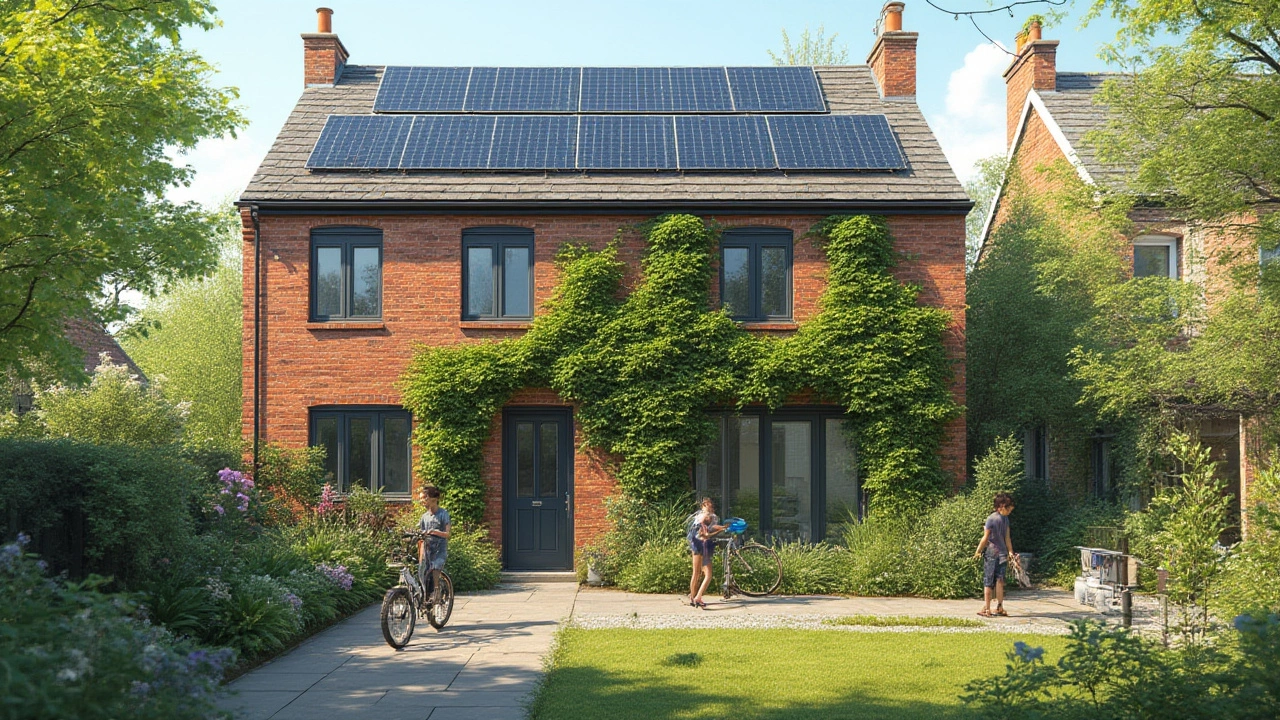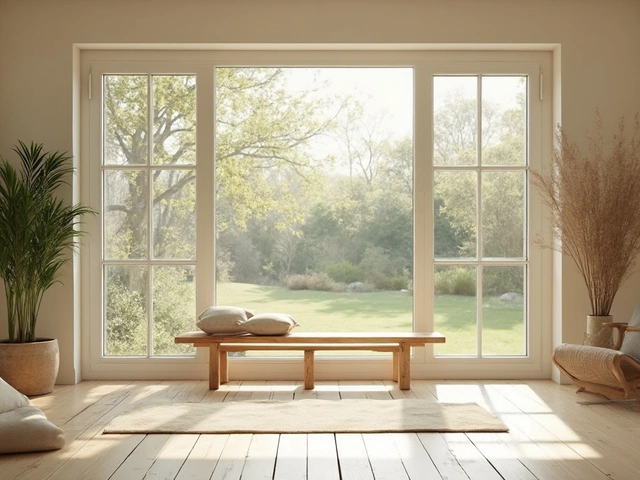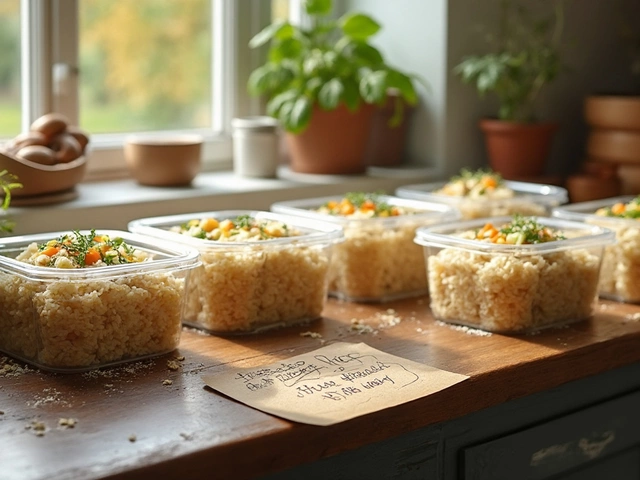Plastic bottles wash ashore on nearly every beach. The oceans have more trash than some small islands do people. Even so, daily life keeps marching on—most of us just trying to keep our heads above water. Still, living greener doesn’t mean you need to become a hermit with a solar-powered tent or quit your favorite things cold turkey. This messy, beautiful world gives you endless ways, both big and small, to lighten your footprint.
Why Living Greener Matters More Than Ever
Every time you toss a coffee cup away, leave lights on all night, or buy fast fashion, you make a choice that ripples out. The average person creates about 4.5 pounds of waste every day. Multiplied across even just a small city, that's mind blowing—imagine 1,000,000 pounds from one city in a single day. No need to feel paralyzed by guilt, but it’s worth facing the facts head on. Global carbon dioxide levels hit 424 parts per million in 2024, the highest since people started tracking the data. If you’ve ever experienced a wildfire haze or a drought, you know this translates directly into real life—your life.
Your everyday actions truly add up. Example: If one household puts up double-glazed windows, they can cut home heating energy use by about 20%. When my husband Derek and I made a few changes (just switching to LED bulbs and line drying towels), our utility bill dropped by $17 a month—small moves, real savings. Scientists also found that cutting meat from your diet just one day each week can save the greenhouse gas equivalent of driving 1,160 fewer miles each year. Even choosing to repair things instead of tossing them means less waste, less resource extraction, and fewer emissions shipped in from the other side of the globe.
We’ve reached a tipping point, not just for the planet but for our wallets and our sanity. Greener living doesn’t always mean expensive organic shopping or fancy gadgets. It’s about smarter choices—sometimes even simpler ones that your grandparents used without a second thought. Forget perfection and focus on consistent, everyday swaps. That's where real progress starts.
Easy Green Habits You Can Start Today
Lifestyle changes don’t have to flip your world upside down. Some are ridiculously simple—like saying no (with a smile) to plastic straws, or swapping paper towels for washable cloths. Start small with these realistic tips and let them become second nature.
- Live greener by carrying a canvas bag whenever you shop. A durable bag can replace hundreds of single-use plastic or paper bags yearly.
- Brew coffee at home using a reusable filter or French press. Each disposable pod or plastic lid adds up over time.
- Adopt a meatless Monday. Even just one plant-based meal each week means less demand for water-intensive, carbon-heavy meat production.
- Buy fewer new items. Check out swaps, thrift stores, or local buy-nothing groups to score everything from jackets to mixing bowls—less packaging, less shipping, more community connection.
- Reduce waste by using a simple compost bin or, if that’s not doable, freeze veggie scraps to make soup stock later.
- Switch out toxic cleaners for vinegar, baking soda, or castile soap—it’s wild how much you can clean with so little.
- Skip the dryer when you can. Hanging up laundry—even if it’s just for a few hours—saves money and energy every single time.
- Plug devices into a smart power strip. One switch can cut phantom energy drain from chargers, TVs, or gaming systems overnight.
- Collect rainwater for watering plants. Up to 40% of summer home water use goes straight to lawns. A simple rain barrel can make a massive dent.
- Try public transit, bikes, or carpooling once a week. One packed bus can take 40 cars off the road.
The point isn’t doing everything all at once. Pick one or two things that suit your daily life. Get into the groove, then add more changes little by little. Celebrate your wins—tiny habits add up faster than you’d think.

Smart Swaps for a Greener Home
Home is ground zero when it comes to going green. This doesn’t mean splurging for a designer eco-home or living candle-lit at night. The idea is to notice where resources slip away, and start plugging those leaks.
You probably already know about LED bulbs and smart thermostats, but what about your water heater? Dropping the temp from 140°F to 120°F can save you enough energy to wash an extra 200 loads of laundry a year (yes, really—Energy.gov says so). If you wash most clothes cold anyway, you’ll never notice the difference.
Unplug small appliances when they’re not in use. The Department of Energy reports that "phantom" energy-drain sucks up to 10% of the average household’s power bill. It’s like tossing a $100 bill straight in the trash each year for… pretty much nothing.
Open windows at the right time. Early morning and late evening, catch the breeze. Close curtains in the heat of the afternoon to keep spaces cool without blasting AC. If you must use the air conditioner, set it up just a few degrees higher than you usually would. Every degree warmer saves somewhere between 1–3% of your cooling costs over the summer.
Skip harsh chemical cleaners. You can clean most things with one part vinegar to one part water—toss in lemon peels if you hate the smell. My family swears this trick works on everything from countertops to shower glass, and it’s budget-friendly.
When appliances wear out, pick ENERGY STAR-certified replacements. These can use 20–40% less energy than standard appliances. If you’re replacing a fridge, look for chest freezers or top-mount models—these use less power than most side-by-side options.
For anyone who can, swap lawns for native plants or clover. These need far less watering and zero pesticides or fertilizer. A patch of native wildflowers not only looks gorgeous but draws in bees and butterflies, creating a small sanctuary right in your backyard.
Renovating or redecorating? Try paint with low or no VOCs (volatile organic compounds). Standard paint can pump toxins into your home's air for weeks after use. Brands now offer plenty of vibrant, durable, non-toxic choices.
Table: How Home Changes Save Energy and Resources
| Home Change | Resource Saved | Potential Annual Impact |
|---|---|---|
| LED Bulbs | Electricity | Save up to $75 per year/bulb |
| Shorter Showers (5 minutes or less) | Water & Gas | Save up to 2,500 gallons of water/year |
| Line Drying Laundry | Electricity | Save 1,000 kWh/year for family of four |
| Smart Power Strips | Electricity | Reduce phantom energy up to $100/year |
| Composting Kitchen Waste | Landfill Space | Diverts up to 300 lbs/trash/year |
The greener you make your home, the more you save on bills, too. This isn’t just planet stuff—it’s about feeling good in your space and maybe keeping more cash in your pocket.
Adopting a Greener Mindset for the Long Haul
Big shifts start in the mind, not the shopping cart. If you just run through life feeling like greener options are chores or punishments, you’ll bounce right back to old habits the minute things get tricky. It helps to reframe actions as self-care, not self-denial.
Notice what you already do well. Maybe you bring a reusable bottle everywhere, or you pick up litter during walks. Celebrate that, and build from there. No one gets it perfect—least of all me. Derek and I sometimes forget our tote bags or cave to the occasional delivery, and that’s okay. Guilt never solved a thing, but curiosity does. Ask yourself, “What would make this greener choice so easy, I’d barely think about it?” Set up a water filter by the sink to cut bottled water. Put an extra tote in your car or backpack. Automate bills to cut mail.
Don’t underestimate the power of community. Teams get things done faster than solo players. Find a neighbor or two who’s keen on swapping garden seeds, sharing yard tools, or splitting bulk food orders. Kids pick up habits that adults do, not just what they say—set an example, invite them into eco-projects, and show how even small actions matter.
Support local farmers’ markets and businesses—every dollar you spend there is a vote for less packaging and shorter supply chains. When you need to buy new, look for companies scoring high on transparency, worker policies, and eco practices. Check ratings on B Corp, Fair Trade, or other reputable certifiers (just make sure they’re real and not greenwashing).
Here’s one thing almost no one talks about: mental clutter makes us buy more stuff, waste more, and lose touch with what we have. Simplify your home and digital life. Sell or donate what you don’t use. Turn off digital notifications from fast fashion or mega-retailers if temptation strikes too often. Give yourself breathing room.
You’ll also find that people who practice gratitude and community giving tend to waste less, reuse more, and vote for greener options. It’s all connected. Life gets lighter and better for everyone when our routines fit the planet’s boundaries instead of fighting against them.
Greener living isn’t about chasing some “perfect” eco-standard. It’s about caring enough to choose smarter, everyday actions. Whether shaving a few dollars off the power bill, breathing a bit clearer, or just feeling good about the difference you make, every step counts. Try something new today—small or big—and treat yourself like you’d treat your favorite houseplant: with patience and a little sunshine.





